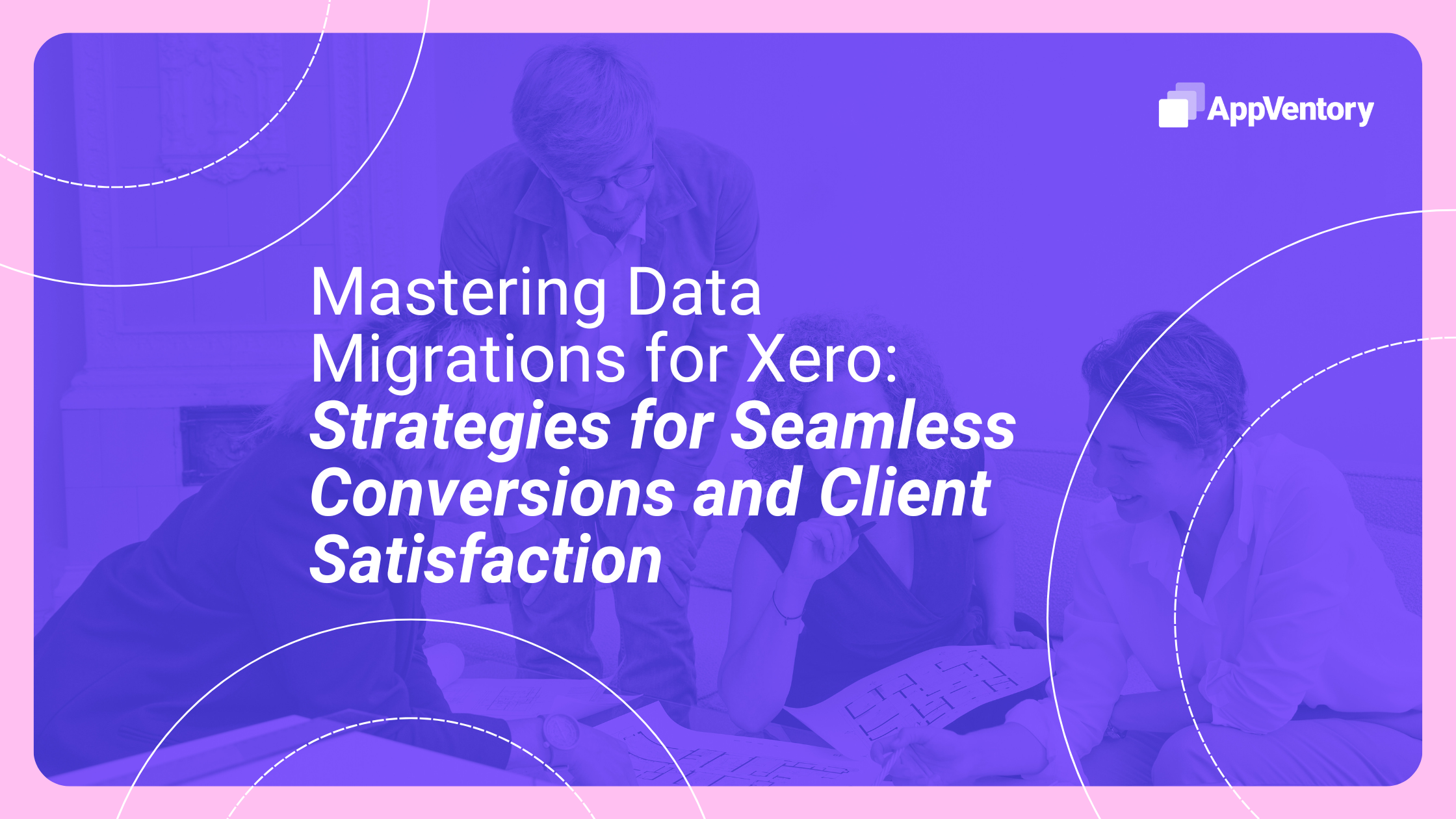Data migrations are fast becoming a core part of accounting practices, whether it’s transitioning clients from outdated legacy systems or helping them consolidate their tech stacks to speed up their processes and workflows.
But migrating data properly is more than a simple copy and paste — it’s much more complicated than that.
Florentina Sandu is a Xero Migration Expert and the founder of Migrate My Accounts, who has helped make hundreds of complex data migration projects smoother and stress-free. Having worked in practices herself for many years, Florentina wrestled through her fair share of odd and outdated systems.
During a recent webinar, she shared why data migrations are so important, warning signs to watch out for, and a step-by-step guide for planning seamless migrations, complete with expert advice and common pitfalls to avoid.
How Xero Migrations Benefit Firms and Clients
The number one benefit of Xero data migrations, according to Florentina, is client satisfaction, which goes both ways because when clients are happy, accountants are happy, too.
The best part of a successful data migration for clients? They no longer have to use the old, clunky systems. As a bonus, migrating to Xero also eliminates so much of the tedious manual from the old process and in many ways, it’s like starting anew.
“I think once the migration is complete, you immediately notice how much smoother things run,” she says, “I think one of the best parts is the hours and days you save clients with Xero.”
One of Xero’s biggest selling points for clients is its user-friendliness, but clients aren’t the only winners because Xero’s automations free up accountants to spend time on more valuable, revenue-generating opportunities like advisory.
“Accountants love Xero because it just works. It automates most of the boring, accounting tasks that we all dread, like bank reconciliations, invoice processing, and so on,” she explained.
Warning Signs that You Need a Data Migration
There are many, many signs that your client might need to migrate their data but clunky systems and an over-reliance on manual processes are two of the biggest reasons for it. But there are different degrees to it.
For example, a client’s system could be too clunky due to a misaligned tech stack or other integration issues. Other times, the system can be so outdated that the data is only accessible through a specific machine, but then you have to track down the one person in the company who has the password or knows how to use it.
Occasionally, clients will get so frustrated with their current system and processes that they’ll come to you asking for modern solutions. But whether the issue is due to the system or something else requires some deeper investigating to be sure.
“Sometimes, the problem isn’t necessarily the system itself. It can be the way the processes work for that specific line, so you might need to dive in to see what doesn’t work, and then decide whether a migration is necessary,” Florentina explains.
Seamless Migrations are Built on Planning, Communication, Testing
Planning and executing seamless migrations involve a lot of moving parts, but Florentina has highlighted two important aspects of the process.
1. Planning
The importance of planning cannot be understated. It’s your chance to take a deep dive into the client’s current processes and make sure you know what works and what doesn’t. Just make sure not to rush it — you want to ensure that you have a proper understanding of the client’s struggles and pain points from the beginning.
While the planning stage can be labor-intensive and time-consuming, it’s always worth it in the end, according to Florentina:
“Planning is the first and most important step because if you don’t do it, then you’re prone to having a failed migration.”
2. Communication
Communication is key to finding out what clients are struggling with and where they think things need improvement. It’s also important for firms to set clear expectations from the start to ensure alignment and to avoid any costly miscommunications further down the road.
“Set up a kickoff meeting for stakeholders. Ask them what they think needs improving, and then start outlining the benefits of migrating to a different system,” she adds.
3. Testing
Always test whatever move you’re going to make first because, more often than not, something will come up that you missed or didn’t think about in the planning stage. So, if you’re migrating a client for the first time, start small. Don’t try to do the entire migration all at once because that’s just asking for trouble.
It’s very important to sit with the client and run through some case scenarios, and let them know what to expect when it comes to migrating system over to a better one,” she noted.
Florentina also detailed the world of risk and regret you’d be in by not testing first:
“You’ll find yourself in the middle of the migration, asking yourself, ‘Why have I signed up for this? Why didn’t I think about this specific detail?”
Avoiding Common Migration Pitfalls
Here are some common migration pitfalls and what to do to avoid falling into them.
Misaligned Expectations
The best way to avoid misaligned expectations? Thorough planning and frequent communication with stakeholders. Otherwise, you could end up with missing details that you only realize were important after the migration began.
“Keep the communication open throughout the migration process. Make sure that you keep updating them on the status, next steps, and how long it will take. This helps reassure clients that their data is in the right hands,” says Florentina.
Migrating Too Little or Too Much Data
Florentina always suggests migrating at least two financial years of data but there are exceptions, of course, like clients with messy data who’d prefer to start fresh.
“Having at least 2 financial years helps a lot with the comparatives. You can see the tendencies, the gaps in the business, and what you need to do to progress and be better,” she explained.
Historical data is always a big question, but it depends on the client and their situation — there’s no right or wrong answer.
“I think it really depends on the accountant when it comes to historical data. Some clients prefer it but it’s not always necessary,” she notes.
“I think it’s really important to have that agreed upon from the beginning, because I have seen cases where the accountant has tried to convince the client that historical data is not needed. And then the client ended up with reporting gaps just because they didn’t have the right figures to compare with,” she continues.
Whether the right amount of data is migrated or not comes down to the client’s goals, which only emphasizes why plannng and communication is so important. These issues can be avoided by setting goals, ensuring alignment, and having an agreed upon, reasonable timeline before the actual migration begins.
Rushing into Things
Sometimes, the thought of helping clients and finding efficiencies is so exciting that we want to dive in and get started right away.
Spotting Opportunities During Migrations
Data migrations are a chance to spot inefficiencies and recommend tools that can make a real difference for your clients.
Florentina highlights how migrations often reveal gaps in workflows or underutilised tech stacks. During the migration process, you’ll uncover opportunities to streamline operations or introduce tools like automated expense processing, inventory management, or reporting software.
This is where AppVentory centralises your clients’ app data, gathers user feedback, and identifies tech stack gaps, AppVentory makes it easier to recommend the right tools for your clients.
Take the Next Step with AppVentory
Migrations can be daunting, but with the right approach—and the right tools—you can ensure a smooth process while adding value to your services. AppVentory simplifies discovery, scoping, and optimisation, helping you deliver better results for your clients. Ready to streamline your tech advisory process? Discover AppVentory today.





